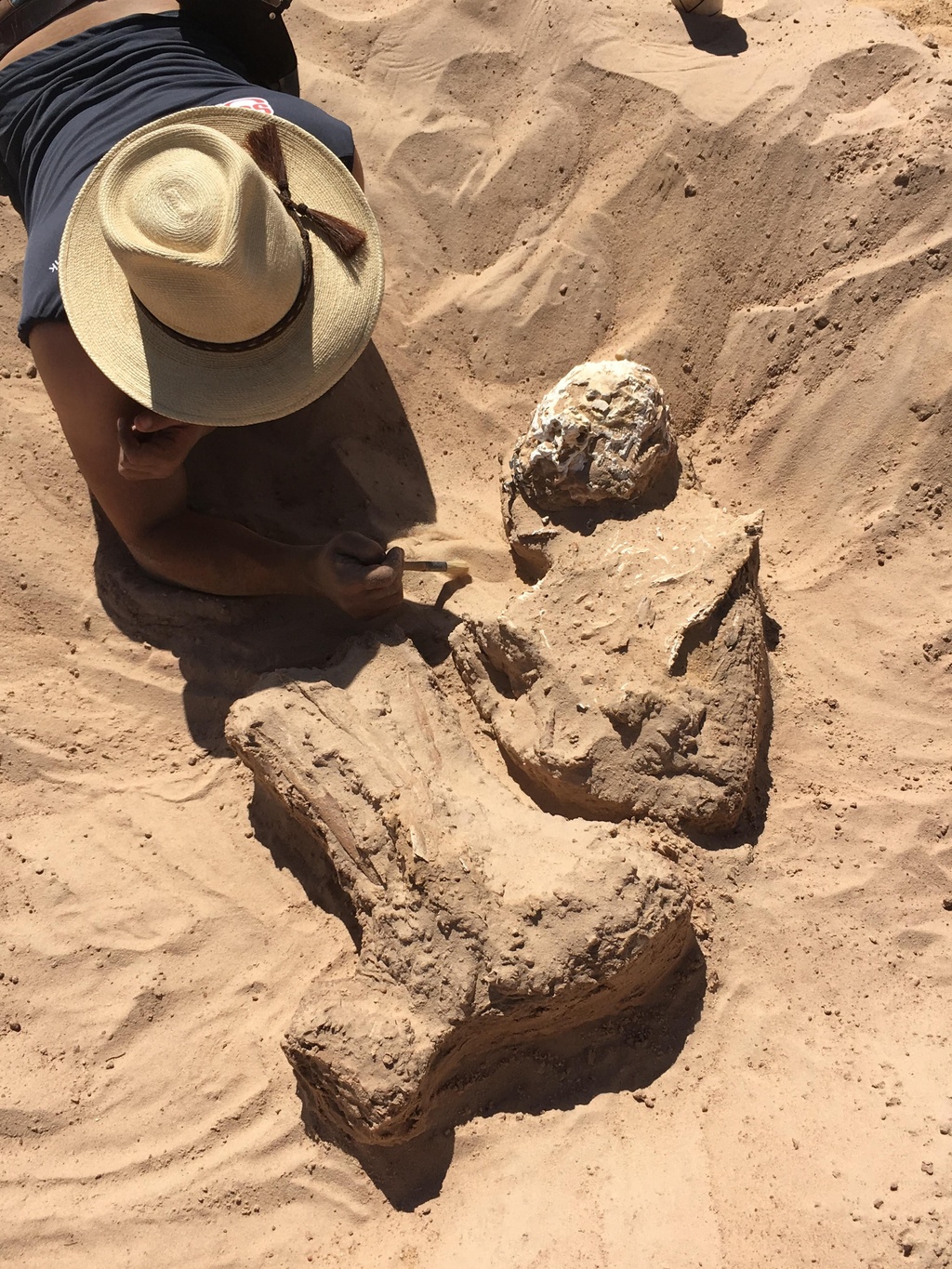2019 Niger Expedition discoveries
Solving the water source of Green Sahara and discovery of more Spinosaurus remains and new long-necked dinosaurs
The 2019 Expedition to Niger, a short (1-month) follow-up to the tremendously successful 2018 Niger Expedition. On this trip, the team had two main objectives. The first was to revisit Gobero, the now-famous archaeological site rich in human burials and artifacts. Several geological experts on the team aimed to discover the source of the lake water that served as a magnet for ancient peoples for thousands of years during the predynastic period known as the “Green Sahara” (10,000-5,000 years ago). They found a series of now-dry pipes coming from an underground aquifer lined with iron deposits, like those from a dripping sink. The source would have continually refilled the lake with freshwater, cascading from a low cliff to the lake’s edge. Other team members, meanwhile, collected several burials and hundreds of new artifacts.
Photo credit Matt Irving
The second half of the expedition explored a remote area of Niger that had never been visited by a paleontological team. On a hunch, while lodging in a small village on the outskirts of the area, the team decided to follow local rumors of dinosaur bone. Those rumors turned out to be understated —a rich new area of fossils was discovered containing the jaws and backbone of Spinosaurus and several new long-necked dinosaur skeletons, one with a 6-foot thigh bone (femur). The 2019 expedition was made possible by generous donation from S.C. Johnson
Photo credit Dan Vidal

